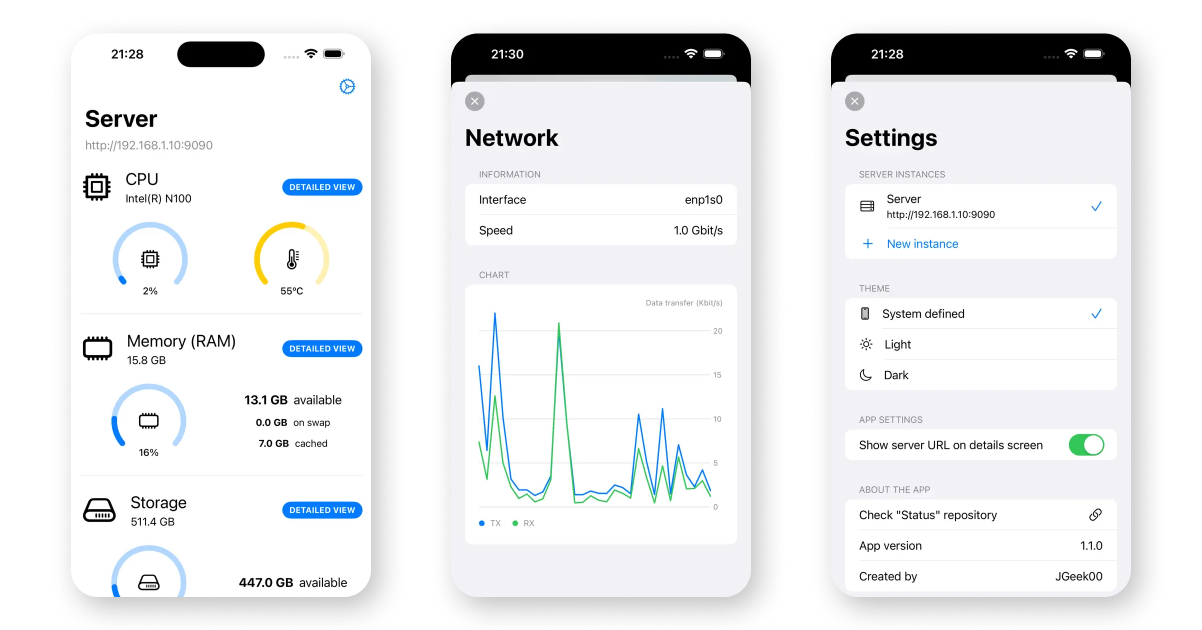ℹ️ Status is a simple, lightweight system monitoring app for small homeservers running Linux.
It utilizes virtual filesystems (like /sys, /proc etc.) to retrieve information and give it to end user via nice web interface.
⚖️ Status provides a good balance between power and simplicity.
🏃 Runs flawlessly on most desktop computers, mini PCs and Raspberry Pis. However, virtual isolated environments may cause problems.
📺 Check the live demo! (hosted by Codixer, see #6)
This will take you just a few seconds. It's up to you which one you choose :)
✔️ Recommended. Status has access to all virtual filesystems in your OS, which means more information and most reliable values.
# Clone the repo
git clone https://github.com/dani3l0/Status && cd Status
# Install required modules
pip3 install -r requirements.txt
# Run Status!
python3 status.py
It just works. Most of features should run without hassle, but depending on your OS configuration you may notice some minor limitations.
# Clone the repo
git clone https://github.com/dani3l0/Status && cd Status
# Build & run app
docker-compose up -d
App should be available on localhost:9090.
Status can be configured in multiple ways:
-
🖥️ Command line arguments - the most important and will override everything.
-
🏞️ environment variables - will override configuration file.
-
📝 configuration file - the least important, overrides default configuration only.
It's good not to mix them. Use --help for more information.
Config keys are named slightly differently under different ways of configuration. Look at the table:
| in JSON config | Environment variable | Command line argument | |
|---|---|---|---|
| The rule | {section}.{key} |
STATUS_{SECTION}_{KEY} |
--{section}-{key} |
| Example #1 | server.port |
STATUS_SERVER_PORT |
--server-port |
| Example #2 | server.address |
STATUS_SERVER_ADDRESS |
--server-address |
| Example #3 | misc.debug |
STATUS_MISC_DEBUG |
--misc-debug |
Command line offers --config (or -c) to set custom config location.
Running Status with --no-config will neither read nor write any configuration file. Overrides --config.

